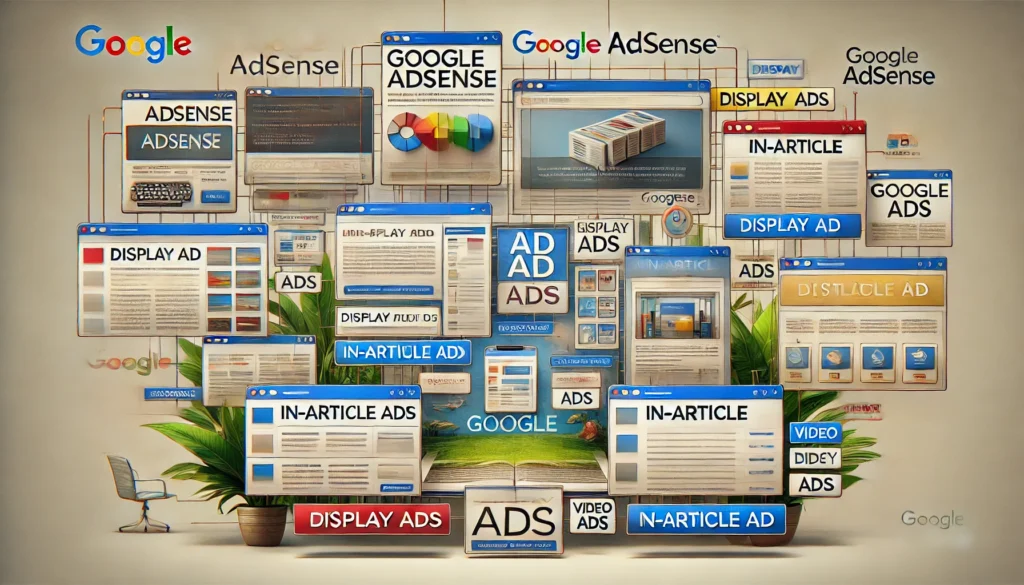
What is Google AdSense?
Google AdSense is an advertising program run by Google that allows website owners, bloggers, and YouTube content creators to earn money by displaying targeted ads on their sites or videos. It is one of the most popular and widely used online advertising programs in the world, providing an easy way for publishers to monetize their content. When visitors interact with these ads, such as by clicking on them or viewing them (depending on the ad type), the publisher earns a share of the advertising revenue.
How Google AdSense Works
AdSense operates on a pay-per-click (PPC) and pay-per-impression model, where advertisers pay Google to place their ads on relevant websites within the AdSense network. Google then shares a portion of this revenue with the publishers who display these ads. Here’s how the process works:
- Sign Up and Get Approved: To use AdSense, publishers need to sign up and get approval from Google. This involves meeting certain eligibility criteria, such as owning a website that complies with AdSense policies and content guidelines.
- Ad Placement: Once approved, publishers can place ad units on their websites by inserting the provided HTML code. The ads can appear in various formats, including banner ads, text ads, display ads, and video ads.
- Ad Targeting: Google uses its proprietary algorithms to serve targeted ads to the site’s visitors. These ads are based on factors such as the content of the website and the user’s previous browsing behavior. For example, if a website focuses on technology, visitors might see ads for the latest gadgets.
- Earnings: When a visitor clicks on an ad or views a CPM (cost-per-thousand impressions) ad, the publisher earns a portion of the ad revenue. The amount earned varies depending on factors like the competitiveness of the ad’s niche, the advertiser’s bid, and the location of the visitor.
- Payment: Google pays publishers when they reach a payment threshold (typically $100). Payments are made monthly via electronic funds transfer (EFT), checks, or other payment methods supported in the publisher’s country.
Types of Ad Formats in AdSense
Google AdSense offers various ad formats to suit different types of content and website layouts. The main ad formats include:
- Text Ads: These are simple ads that consist of a headline, description, and a link. They are commonly used because they blend seamlessly with the content of most websites.
- Display Ads: These ads are more visual and can include images, graphics, and animations. They are effective in catching the viewer’s attention and are often used for brand promotions.
- Rich Media Ads: Rich media ads are interactive ads that can include elements like videos, animations, or expandable content. They provide a more engaging experience for users.
- Matched Content: This is a recommendation service where publishers can display relevant content from their own website alongside the ads. It helps increase page views while monetizing.
- Link Units: These are ads that display a list of topics relevant to the website’s content. When a user clicks on a topic, they are taken to a page with ads related to that topic.
- In-Feed and In-Article Ads: These ads appear within the content itself, such as in-between paragraphs of an article or within the site’s feed. They are less intrusive and can improve the user experience while generating revenue.
- Video and YouTube Ads: For content creators on YouTube, AdSense can be used to monetize videos through ads that play before, during, or after the video content. These can include skippable ads, non-skippable ads, bumper ads, and overlay ads.
Advantages of Using Google AdSense
- Ease of Use: AdSense is known for its simplicity. Once approved, publishers can easily integrate the ad code into their websites, and Google handles the ad selection, display, and revenue collection.
- Monetize a Variety of Content: Whether you run a blog, a news site, a forum, or even a YouTube channel, AdSense provides options for monetizing different types of digital content.
- High-Quality Ads: Since Google has a large network of advertisers, AdSense can display ads from well-known brands, which can enhance the credibility of your website.
- Ad Customization: AdSense allows publishers to customize the appearance of ads to better match the design and layout of their websites. This includes changing the color scheme, size, and style of the ad units.
- Reliable Payments: AdSense provides timely and consistent payments to publishers, with multiple payment methods available, making it a preferred choice for many content creators.
- Global Reach: Google AdSense supports multiple languages and currencies, making it accessible to publishers worldwide.
Challenges and Limitations of Google AdSense
- Strict Approval Process: Getting approved for AdSense can be challenging, especially for new websites. Google has stringent guidelines to ensure that sites provide valuable content and do not engage in fraudulent activities.
- Low Earnings for Some Niches: The revenue earned from AdSense depends on the niche. Some topics, such as finance or technology, tend to attract higher-paying ads, while others may generate lower earnings.
- Account Suspension or Ban Risks: Violating Google’s policies, such as clicking on your own ads, displaying prohibited content, or using deceptive practices, can lead to account suspension or a permanent ban.
- Ad Blocking Software: The widespread use of ad-blocking software can reduce the number of impressions and clicks on ads, potentially decreasing revenue.
- Revenue Share with Google: Google takes a percentage of the advertising revenue before sharing the remaining earnings with the publisher. For content network ads, publishers receive 68% of the revenue, while for search ads, they receive 51%.
How to Maximize Earnings with Google AdSense
- Optimize Ad Placement: Position ads in places where they are likely to get more visibility and clicks, such as above the fold, within the content, or at the end of articles.
- Use Multiple Ad Formats: Combining different ad formats (e.g., text and display ads) can increase ad variety and engagement.
- Increase Website Traffic: More traffic usually means more ad impressions and clicks. Focus on SEO, social media marketing, and other strategies to drive traffic to your site.
- Target High-Paying Niches: If possible, write content on topics that are known to attract higher-paying ads, such as finance, legal, or health.
- A/B Testing: Experiment with different ad placements, formats, and colors to find the most effective setup for your audience.
- Comply with AdSense Policies: Follow Google’s guidelines strictly to avoid account suspension. Ensure your content is original and does not violate any of Google’s prohibited content rules.
Conclusion
Google AdSense is a powerful tool for monetizing online content, whether you run a blog, a news site, or a YouTube channel. Its ease of use, wide range of ad formats, and reliable payment system make it a preferred choice for many content creators. However, to make the most of AdSense, it is important to optimize your ad placements, create quality content, and adhere to Google’s policies. While it may not generate substantial income for all publishers, it can be a valuable source of passive revenue when used effectively.
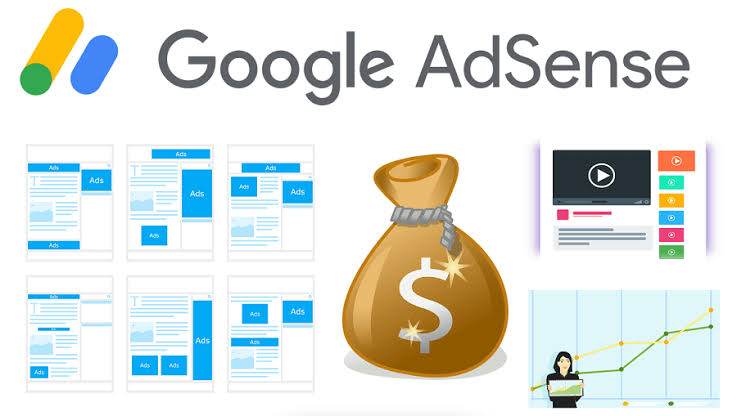
Google AdSense is a popular online advertising program developed by Google that allows website owners and content creators to monetize their online content. It works by displaying targeted ads on the publisher’s website, which can generate revenue when users view or click on these ads. AdSense is one of the most widely used online ad networks because it provides a user-friendly and efficient way for website owners, bloggers, and YouTube channel creators to earn money from their content without the need for direct advertiser relationships.
How Google AdSense Works
- Ad Display and Targeting:
Google AdSense uses sophisticated algorithms to analyze the content of the publisher’s website and then displays ads that are relevant to the page’s content and the visitor’s interests. This targeting ensures that the ads shown are likely to be of interest to the users, thereby increasing the chances of engagement. Ads can come in various formats, including text ads, display ads, rich media, and video ads. They are provided by advertisers who use Google’s AdWords program (now known as Google Ads) to bid for ad placement on relevant sites. - Cost Per Click (CPC) and Cost Per Mille (CPM):
Publishers can earn money through two main revenue models:
- Cost Per Click (CPC): The publisher earns a commission each time a user clicks on an ad.
- Cost Per Mille (CPM): The publisher earns revenue based on the number of impressions (views) the ad receives. “Mille” refers to 1,000 impressions, so a CPM rate is the earnings for every 1,000 views of the ad.
- Revenue Sharing Model:
Google shares a portion of the ad revenue with the publisher. Typically, publishers receive 68% of the ad revenue, while Google retains 32%. This percentage may vary depending on the type of content and placement.
Key Features and Benefits of Google AdSense
- Ease of Use:
Google AdSense is relatively easy to set up. Website owners simply need to sign up for an account, place a small piece of HTML code on their site, and Google takes care of the rest, including ad targeting, placement, and payments. - High Flexibility and Customization:
Publishers have control over the types of ads that appear on their site, and they can choose from various ad formats to suit their layout and content style. Google also allows publishers to block certain ads they don’t want to appear on their site, such as ads from competitors. - Automated Ad Management:
Google’s algorithms dynamically select the ads to show based on user data, search history, and the content of the website. This automation saves time and effort for the website owner, as they don’t have to manually choose which ads to display. - Access to a Large Pool of Advertisers:
Since Google Ads is one of the largest ad networks globally, publishers using AdSense have access to a vast number of advertisers from different industries. This diversity can improve ad quality and relevance, boosting potential earnings. - Reliable Payment System:
Google AdSense offers monthly payouts as long as the publisher’s earnings reach the minimum threshold of $100. Payments can be received via electronic funds transfer, check, or other local payment methods, depending on the country.
Ad Formats Supported by Google AdSense
- Text Ads:
These are simple ads consisting of a headline and a short description. They often appear as a list of ads with a link, and the advertiser pays when a user clicks on the link. - Display Ads:
Display ads are image-based or banner ads that can be placed on various parts of a website. They can be static or animated, allowing for more visual engagement. - In-Feed and In-Article Ads:
These ads are embedded within content feeds or articles, making them less intrusive and more integrated into the content that users are consuming. - Matched Content:
This ad format promotes relevant content within the publisher’s site, enhancing user experience while providing ad opportunities. - Link Units:
These consist of a list of topics relevant to the content of the site, which lead to ads. However, Google announced that it would retire link units in 2021. - Video Ads:
AdSense also supports video ads, which are popular on video-sharing platforms like YouTube.
Common Requirements and Policies
To maintain the quality and safety of the ad network, Google AdSense has strict policies that publishers must comply with:
- Content Guidelines:
Websites that host AdSense ads must comply with Google’s content policies, which prohibit content related to illegal activities, hate speech, copyright infringement, and adult material, among others. - Ad Placement Policies:
There are rules regarding the placement of ads to ensure that they do not interfere with the user experience. For example, publishers are discouraged from placing ads too close to clickable content to avoid accidental clicks. - Click Fraud Prevention:
Google has mechanisms to detect and prevent click fraud, which includes accidental clicks or intentional clicks by the website owner or bots to generate artificial revenue. - Age and Website Requirements:
Publishers must be at least 18 years old and should have an established website with sufficient content before applying for AdSense.
Google AdSense on YouTube
AdSense is also used to monetize videos on YouTube. Content creators who meet certain eligibility criteria (such as a minimum number of subscribers and watch hours) can join the YouTube Partner Program, allowing ads to be displayed on their videos. Earnings are shared between the content creator and YouTube (which is owned by Google).
Advantages and Disadvantages of Google AdSense
Advantages:
- Accessibility: It’s easy to get started, with minimal technical requirements.
- Passive Income: It allows publishers to generate income without actively managing the ads.
- Scalability: As website traffic increases, so can the revenue.
- Robust Reporting Tools: AdSense offers detailed reports and analytics to track ad performance.
Disadvantages:
- High Competition: Due to the large number of publishers, revenue can be low for sites with minimal traffic.
- Policy Restrictions: Strict adherence to Google’s policies is required, and violations can lead to account suspension.
- Payout Threshold: Publishers must reach a $100 minimum balance to receive payments.
Conclusion
Google AdSense is a valuable tool for website owners, bloggers, and content creators who want to earn revenue by displaying ads on their online properties. While it offers an easy and automated way to monetize content, it requires compliance with strict guidelines and can be highly competitive. By delivering relevant and targeted ads to users, AdSense remains a popular choice for online monetization.
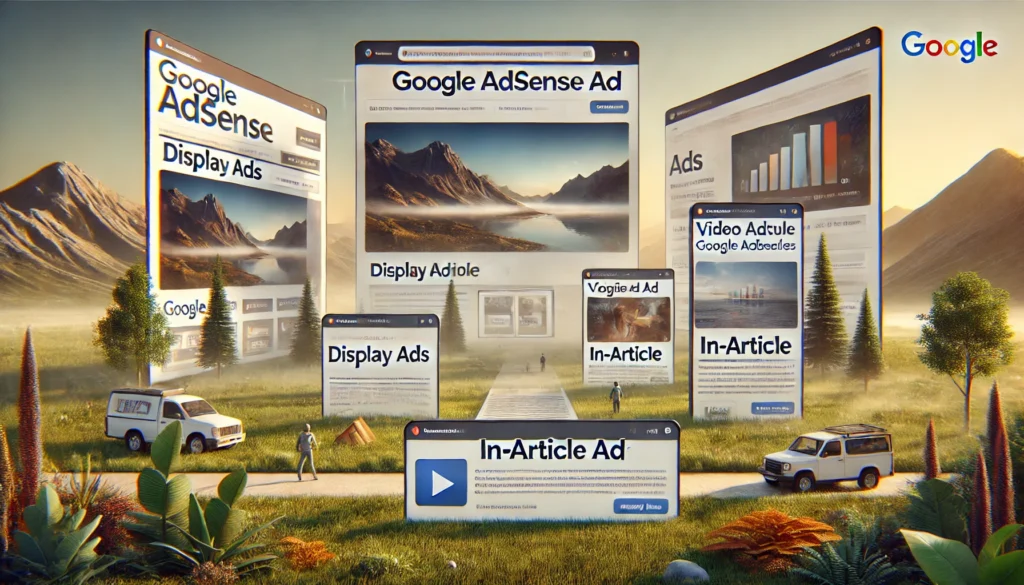
A great example of using Google AdSense effectively is a niche blog focused on a specific topic, such as “healthy recipes for busy professionals.” Let’s break down how a blog like this can successfully use AdSense to generate revenue:
Example: Healthy Recipes Blog
Background:
A food blogger named Sarah starts a website called “Quick & Healthy Bites” that focuses on easy-to-make, nutritious recipes tailored for busy professionals. Sarah has a passion for cooking and nutrition and regularly shares recipes, cooking tips, and meal prep ideas.
Setting Up AdSense:
- Website Content: Sarah writes high-quality articles that cover a variety of healthy recipes, meal plans, and nutritional advice. Her content includes detailed instructions, photos of the dishes, and occasional videos. The site features consistent updates, which help attract regular visitors.
- Applying for AdSense: Once the blog has a good amount of content and steady traffic, Sarah applies for Google AdSense. She ensures that the blog complies with AdSense policies, with content that is suitable for all audiences and a well-organized layout.
- Placing Ads: After approval, Sarah uses AdSense to place a mix of ad formats on her website:
- Display Ads: She positions banner ads at the top of the page and in the sidebar, ensuring they are visible but not disruptive to the user experience.
- In-Article Ads: These are embedded within the articles, breaking up long posts and appearing as readers scroll through the content.
- Matched Content: Sarah uses this ad format to promote related articles on her blog, encouraging readers to stay on the site longer while still providing ad opportunities.
Ad Performance and Revenue:
- Targeted Ads: The ads displayed on Sarah’s blog are relevant to her audience, often featuring kitchen gadgets, health food products, fitness equipment, or meal delivery services. This targeting is effective because the ads align with the interests of her readers, who are likely to engage with content related to healthy living.
- Earnings Through CPC and CPM: Sarah earns revenue both when readers click on the ads (CPC) and when the ads are viewed by users (CPM). Since her content attracts a niche audience interested in health and nutrition, the ad clicks tend to have a higher value, boosting her earnings.
- Growth Over Time: As Sarah continues to create valuable content, her blog’s traffic increases. More visitors mean more ad impressions and clicks, leading to higher revenue. She also diversifies by creating recipe videos, which she uploads to her YouTube channel, monetizing the videos through AdSense on YouTube.
Additional Monetization Efforts:
In addition to Google AdSense, Sarah partners with relevant brands for affiliate marketing, adding affiliate links to the blog. She also creates downloadable e-books and meal plans for sale. This multi-channel approach maximizes her income while keeping the user experience positive.
Why This Example Works:
- Niche Content: By focusing on a specific topic (healthy recipes for busy professionals), Sarah attracts a targeted audience, which leads to higher ad engagement.
- Content Quality: The blog’s high-quality articles and appealing images make the site more attractive to both readers and advertisers.
- Strategic Ad Placement: Carefully placing ads so they are visible but not intrusive enhances user experience while maximizing revenue potential.
This example demonstrates how Google AdSense can be effectively used to generate income from a well-targeted, content-rich website.
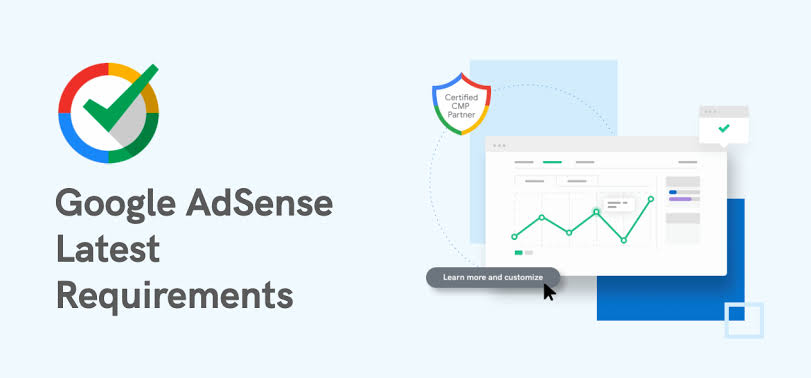
To implement Google AdSense on a website, you need to integrate AdSense ad code provided by Google into your site’s HTML. Here’s an example of how to set up a basic AdSense ad unit on a website:
Steps to Use Google AdSense Code
- Sign Up for Google AdSense:
- First, you need to sign up for a Google AdSense account and get approved.
- After approval, you can create ad units and get the corresponding ad code.
- Create an Ad Unit in AdSense:
- In your AdSense account, navigate to Ads > By ad unit, and click Create New Ad Unit.
- Choose the type of ad you want (e.g., Display ads, In-article ads, or Auto ads).
- Set the ad format, size, and style to fit your website’s layout.
- Once configured, you will be provided with a code snippet.
- Add the Ad Code to Your Website:
- Copy the generated code snippet and paste it into your website’s HTML where you want the ad to appear.
Example of Google AdSense Code
Here’s a basic example of an AdSense code snippet you might use on a website:
<!-- Example Google AdSense Ad Unit Code -->
<script async src="https://pagead2.googlesyndication.com/pagead/js/adsbygoogle.js"></script>
<!-- Ad Unit Code -->
<ins class="adsbygoogle"
style="display:block; text-align:center;"
data-ad-client="ca-pub-1234567890123456"
data-ad-slot="1234567890"
data-ad-format="auto"
data-full-width-responsive="true"></ins>
<script>
(adsbygoogle = window.adsbygoogle || []).push({});
</script>Explanation of the Code:
- Loading the AdSense Script:
<script async src="https://pagead2.googlesyndication.com/pagead/js/adsbygoogle.js"></script>This script loads the AdSense library asynchronously to avoid slowing down the page.
- Ad Unit Configuration:
<ins class="adsbygoogle"
style="display:block; text-align:center;"
data-ad-client="ca-pub-1234567890123456"
data-ad-slot="1234567890"
data-ad-format="auto"
data-full-width-responsive="true"></ins>data-ad-client: This is your unique AdSense publisher ID (replace “ca-pub-1234567890123456” with your actual publisher ID).data-ad-slot: The unique ID for the ad unit you created in your AdSense account.data-ad-format="auto": Automatically adjusts the ad format based on the available space.data-full-width-responsive="true": Makes the ad responsive to fit different screen sizes, which is important for mobile compatibility.
- Ad Display Script:
<script>
(adsbygoogle = window.adsbygoogle || []).push({});
</script>This script tells the AdSense library to show ads in the specified <ins> element.
Where to Place the Code:
- You can add this code snippet directly to the HTML of your website in places where you want ads to appear, such as:
- Within the
<body>tag: To display ads in the main content area. - In the website’s sidebar or footer: For consistent placement across all pages.
- Within individual articles or posts: To integrate ads naturally within the content.
Important Considerations:
- Comply with AdSense Policies: Make sure your site adheres to Google AdSense policies, including content guidelines and ad placement policies.
- Avoid Too Many Ads: Overloading your site with ads can negatively impact user experience and may lead to penalties from Google.
- Responsive Ads: Using responsive ad units ensures your ads look good on all devices, including mobile.
By implementing this code snippet properly, you can start displaying ads on your website and earning revenue through Google AdSense.
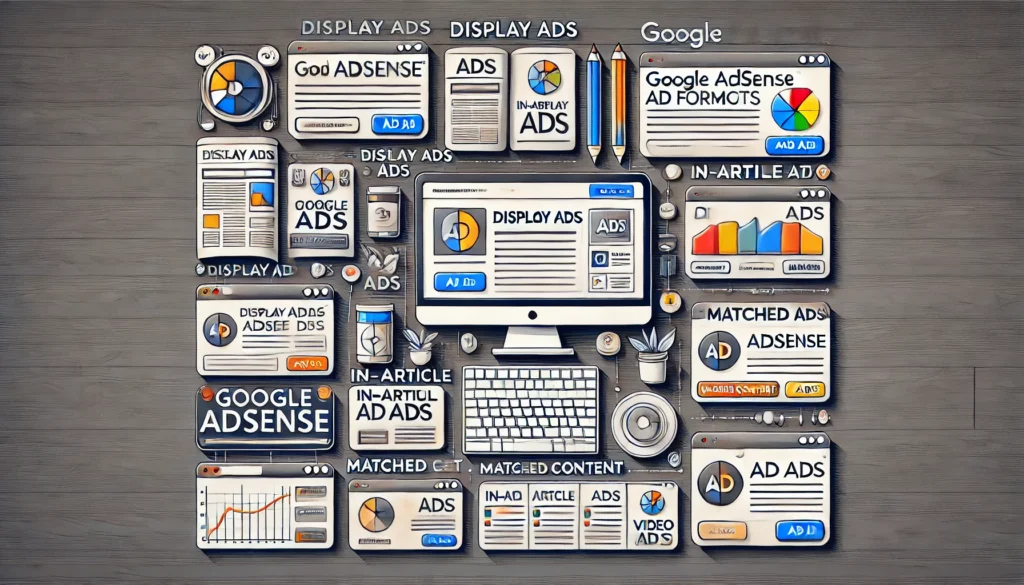
Google AdSense supports a variety of ad formats and categories that can be used to optimize the way ads appear on your website or content. The categories in AdSense can be broadly classified into different types based on the ad format, content type, and the specific placement on the site.
1. Ad Format Categories
These categories are based on the format or type of ad that can be displayed:
- Display Ads: These are image-based or banner ads that can be static or animated. They come in various sizes and can appear on the top, sides, or bottom of web pages.
- Text Ads: Simple text-based ads that include a headline, a short description, and a link. These ads are lightweight and can blend easily with website content.
- In-Feed Ads: These ads are integrated within the content feed (such as a list of blog posts or product listings), designed to look similar to the content.
- In-Article Ads: Placed within the article content, these ads appear as the user scrolls through the text. They are designed to be non-intrusive and provide a good user experience.
- Matched Content: This ad format helps promote relevant content on your own website. It displays a combination of ads and links to other articles from your site.
- Link Units (Retired): Previously, link units consisted of a list of topics relevant to the content, leading to ads. However, Google retired this format in 2021.
- Anchor Ads: These are mobile-friendly ads that appear at the edge of the screen and stay fixed as the user scrolls.
- Vignette Ads: Full-screen ads that appear between page loads on your website, often used on mobile devices.
- Video Ads: AdSense can serve video ads, which are typically displayed before, during, or after video content on platforms like YouTube.
2. Content Category Targeting
These categories determine the type of content for which ads are displayed:
- Sensitive Categories: These include ads related to topics such as alcohol, gambling, or weight loss. Publishers have control over whether they want to allow ads from these categories.
- General Categories: These cover a wide range of mainstream topics, such as:
- Arts & Entertainment
- Beauty & Fitness
- Business & Industrial
- Computers & Electronics
- Food & Drink
- Health
- Home & Garden
- News
- Shopping
- Sports
- Travel
Publishers can choose to allow or block certain general ad categories to suit their audience.
3. Auto Ads Categories
AdSense also offers Auto Ads, which automatically place ads across a website. The categories here include:
- Text & Display Ads: Automatically inserted ads that can appear in optimal locations on a website.
- In-Page Ads: Ads that appear on the page as part of the natural reading flow.
- Overlay Ads (e.g., Anchor Ads, Vignette Ads): Placed on top of the content and can be dismissed by users.
4. Ad Size Categories
AdSense supports various ad sizes, which are grouped into:
- Responsive Ads: These ads automatically adjust their size and layout based on the screen size and available space.
- Fixed-Size Ads: Ads with a predetermined width and height, such as 300×250 pixels or 728×90 pixels.
5. YouTube Ad Categories (If Monetizing Videos)
If using AdSense for monetizing videos on YouTube, the following ad types may be used:
- Pre-roll Ads: Video ads that play before the main content.
- Mid-roll Ads: Video ads that play during the main content.
- Post-roll Ads: Video ads that play after the main content.
- Overlay Ads: Small ads that appear at the bottom of the video.
By understanding these categories, publishers can effectively optimize their AdSense setup to maximize revenue while maintaining a positive user experience.
- Also Read : How to Optimize Your WordPress Site with Cloudflare.
- Also Read : How to Publish Your Own Website in the USA.
- Also Read : What is the Benfite of Hostinger For a Website.
Google AdSense Summary
Google AdSense is an online advertising program that enables website owners and content creators to monetize their sites by displaying targeted ads. The program works by serving ads relevant to the content of the site and the interests of its visitors, thereby maximizing engagement and revenue potential.
Key Features:
- Ad Formats: AdSense offers various ad formats, including display ads, text ads, in-feed ads, in-article ads, and video ads. These formats can be tailored to fit the layout of the website.
- Revenue Models: Publishers earn money primarily through two models: Cost Per Click (CPC), where they earn for each ad click, and Cost Per Mille (CPM), where they earn for every 1,000 ad impressions.
- Targeting: Ads are dynamically targeted using Google’s algorithms, ensuring relevance based on user data and website content.
- Customizability: Publishers can customize the types and appearance of ads on their site and can block ads from certain categories.
- Analytics: AdSense provides detailed performance reports, helping publishers optimize their ad strategies.
Advantages:
- Ease of Use: Simple setup process and minimal technical knowledge required.
- Diverse Ad Pool: Access to a wide range of advertisers and ad types.
- Automated Management: Google manages ad placement and targeting, saving time for publishers.
Disadvantages:
- Strict Policies: Publishers must adhere to Google’s content and ad placement policies, with the risk of account suspension for violations.
- Revenue Variability: Earnings can fluctuate based on traffic and ad engagement, and competition may lead to lower payouts.
Implementation:
To implement AdSense, publishers sign up for an account, create ad units, and integrate the provided code into their website’s HTML. Compliance with AdSense policies is crucial for maintaining a healthy account and maximizing earnings.
In summary, Google AdSense is a powerful tool for monetizing online content, offering flexibility and ease of use for website owners while providing targeted advertising solutions for advertisers.

